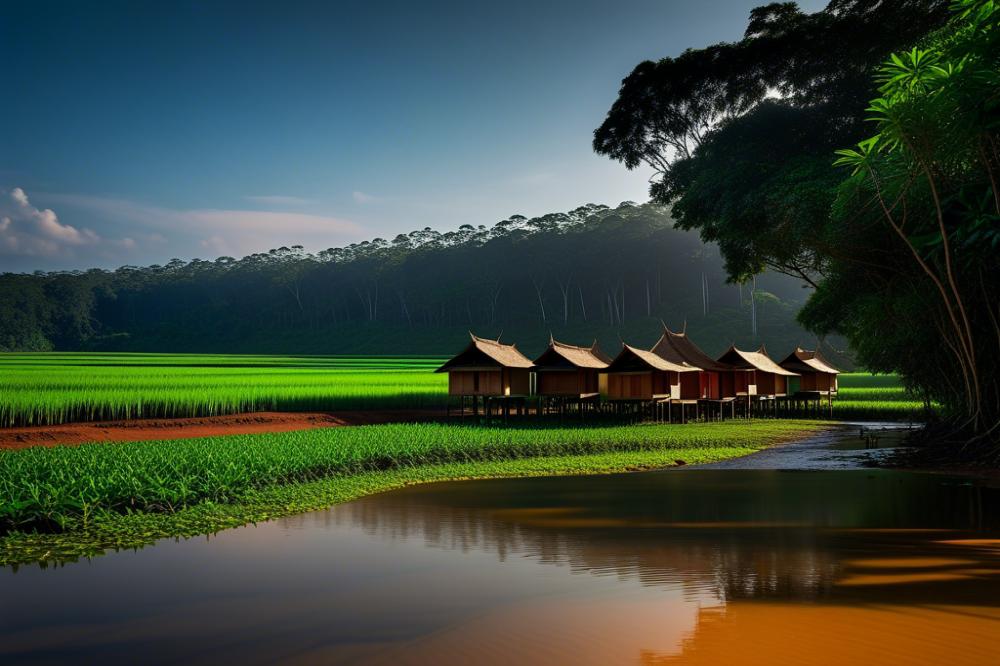Exploring the Unique Culture of the Bunong People in Mondulkiri
The Bunong people represent a fascinating ethnic group residing in the beautiful region of Mondulkiri. Their way of life is deeply rooted in the lush forests that surround them. traditions play a significant role in their daily existence, shaping their identity and connections to one another.
With a rich tapestry of cultural practices, the Bunong community thrives on the values of spirituality, agriculture, and artistry. Local rituals often reflect the close relationship they maintain with nature. Observing their ceremonies offers a glimpse into how they honor their ancestors and the earth itself.
Silk weaving is a beloved craft among the Bunong. This traditional practice showcases their skills and preserves their heritage. The intricate designs often tell stories of their history and beliefs, making each piece truly special.
In addition, music and dance are vital components of their social fabric. Celebrations come alive with vibrant performances that bring everyone together. These moments strengthen community bonds and create a sense of belonging.
Travelers seeking adventure in Cambodia should not miss the chance to immerse themselves in this rich culture. Experiencing the Bunong way of life will highlight a blend of traditions and rituals unlike any other. Engaging with the Bunong people provides a deeper understanding of their connection to the natural world and reveals the heart of their unique identity.
Bunong culture
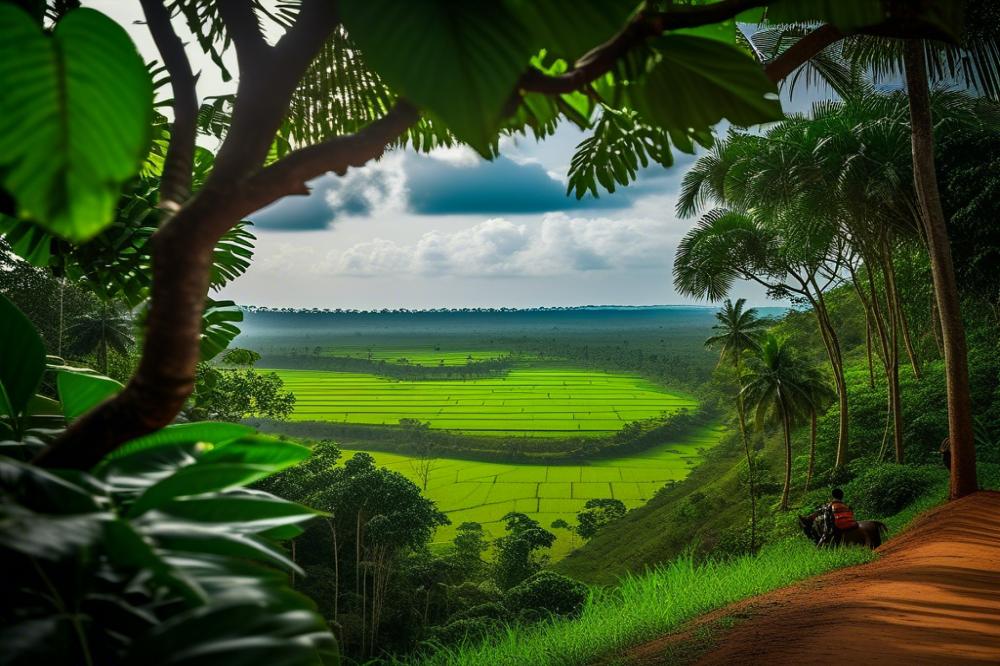
The Bunong people of Mondulkiri present a fascinating glimpse into an ethnic group deeply connected to their land. Their traditions stand out, showcasing a vibrant tapestry of beliefs and practices. Rituals play an important role in Bunong life. Festivals often celebrate the changing seasons or honor their ancestors. These events foster a strong sense of community among the Bunong.
Community ties are crucial for the Bunong. Daily life revolves around agriculture, which is a cornerstone of their culture. Families work together in the fields, cultivating rice and other crops. This teamwork not only sustains them but also strengthens their bonds. Through shared labor, the Bunong people cultivate not just the land, but also their relationships.
Spirituality is woven into every aspect of daily practices. The Bunong regard nature as sacred. Their forests hold deep significance, viewed as a source of life and wisdom. Many rituals are dedicated to spirits that inhabit these areas. Ceremonies may involve offerings or prayers to ensure harmony between people and nature.
Artisan crafts are another important aspect of their culture. Silk weaving showcases intricate designs that carry stories and meanings. Each piece reflects the identity of the people and their connection to the world around them. Music and dance are integral to celebrations as well. Traditional songs and lively dances accompany their gatherings, creating a joyful atmosphere.
Through these expressions, the Bunong reveal their history and values. Their cultural practices invite others to understand and appreciate their way of life. Engaging with this culture opens doors to learning about a world rich in tradition and community spirit.
Agriculture and Daily Life
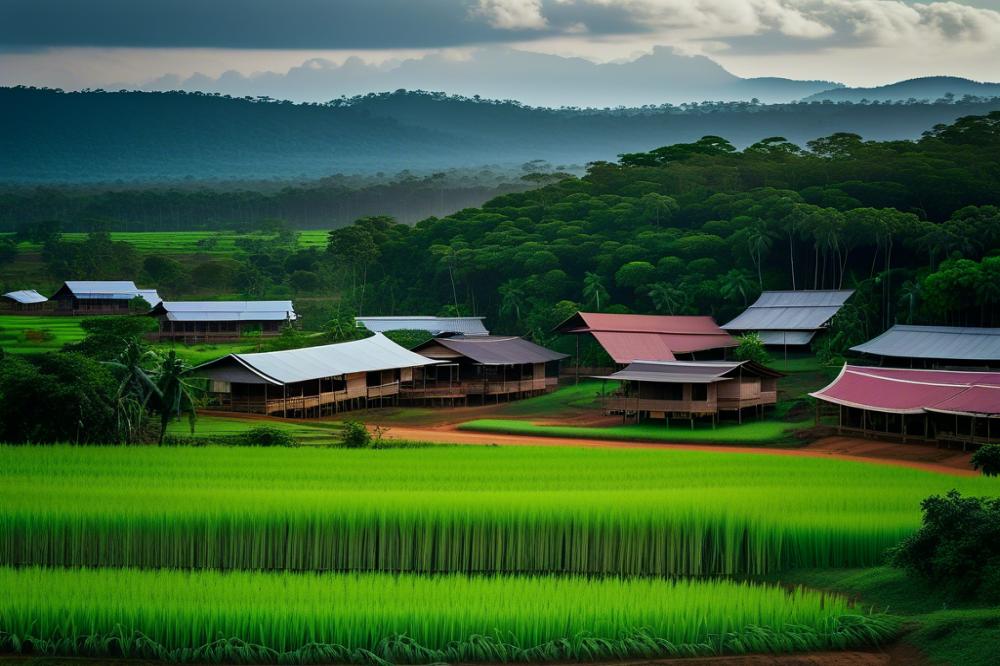
The Bunong people heavily rely on agriculture for their livelihood. This ethnic group knows how to cultivate the land in ways that respect their surroundings. They practice sustainable farming methods that protect the environment. Instead of using harmful chemicals, they focus on natural fertilizers. This approach promotes healthy crops and preserves the forests they cherish.
Rice is a staple in their diet, but they also grow various vegetables and fruits. The Bunong have developed methods that allow them to yield crops without depleting the soil. Crop rotation is one key practice they follow. It helps maintain soil fertility and supports biodiversity. This kind of farming is not just about food; it reflects their traditions and cultural identity.
Community plays a vital role in their agricultural practices. Families often work together during planting and harvesting seasons. Each member contributes according to their abilities, which strengthens bonds. The Bunong also celebrate agricultural festivals. These rituals highlight their gratitude for the land and its resources. Music and dance are integral to these events, turning work into communal joy.
Spirituality weaves through every aspect of their farming life. They believe that the spirits of the forests influence their harvests. Rituals are performed to honor these spirits, showing respect for nature’s gifts. This connection to the earth shapes their daily routines and activities. Agriculture becomes a medium through which they express their beliefs and values.
In addition to farming, many Bunong people are skilled in silk weaving. This craft connects them to their history and adds to their economic stability. The patterns in their fabrics often tell stories, reflecting their cultural heritage. Traditional methods are used, ensuring that these techniques are passed down through generations. Weaving is not just a business; it’s a cherished art form.
Life among the Bunong people is rich and intertwined with nature. Their agricultural practices are a testament to their commitment to sustainability. The forests are not just backdrops; they are a crucial part of their identity. This deep-rooted connection fosters a holistic view of their world. Through agriculture, music, and rituals, the Bunong maintain a vibrant cultural life that thrives against the backdrop of their beautiful homeland.
Artistry and Craftsmanship
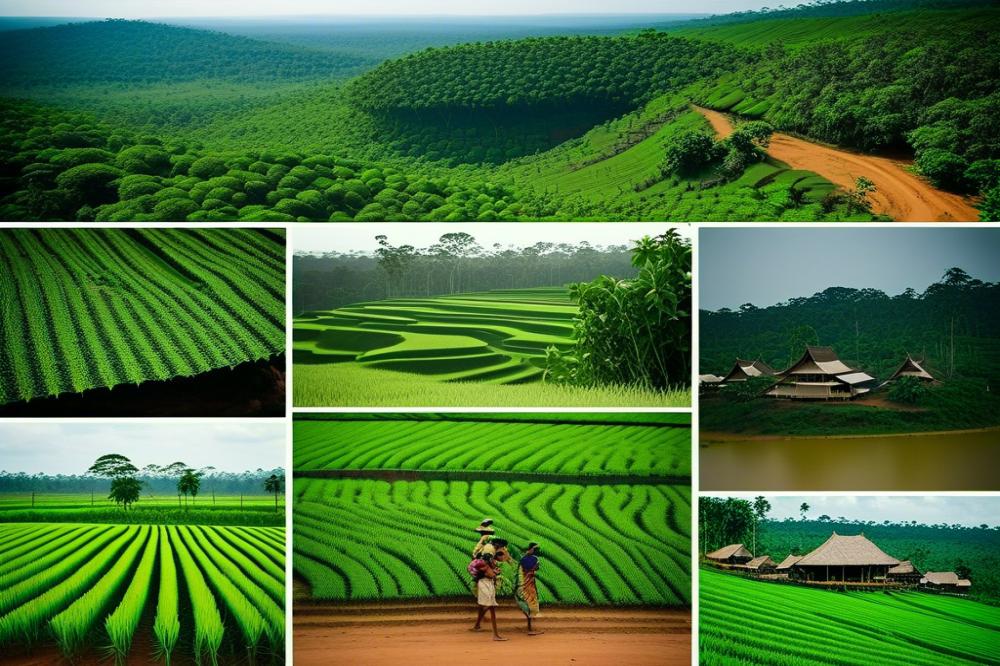
The Bunong ethnic group is known for its remarkable craftsmanship. One of the most distinguished traditions is silk weaving. This art form showcases the community’s deep connection to their surroundings. The forests provide not just materials but also spiritual inspiration for their creativity.
Silk weaving involves intricate techniques passed down through generations. Each artisan learns from their family, ensuring a rich heritage. They use locally sourced silk from silkworms. dyes made from natural plants add color and beauty to the fabrics.
Patterns often hold significance. They may reflect local myths or rituals. The designs tell stories of ancestors or convey messages about community values. This craftsmanship is not merely about aesthetics; it is a vital part of Bunong culture.
Artisans often weave while surrounded by the sounds of music and laughter. They gather in groups, sharing stories as they work. These moments enhance community bonds and promote cultural traditions. Dance also plays a vital role in their celebrations, complementing the beauty of the woven textiles.
The emphasis on craftsmanship shows the Bunong people’s respect for their heritage. Each piece of fabric carries more than just beauty; it embodies pride and identity. For the Bunong, artistry is a way of life and a celebration of spirituality.
Agro-based practices support the silk weaving industry. Agriculture provides necessary resources, like mulberry leaves, to feed silk-producing worms. This connection to the land reinforces their appreciation for nature. The forests are a vital aspect of their livelihood and creativity.
Music and Dance
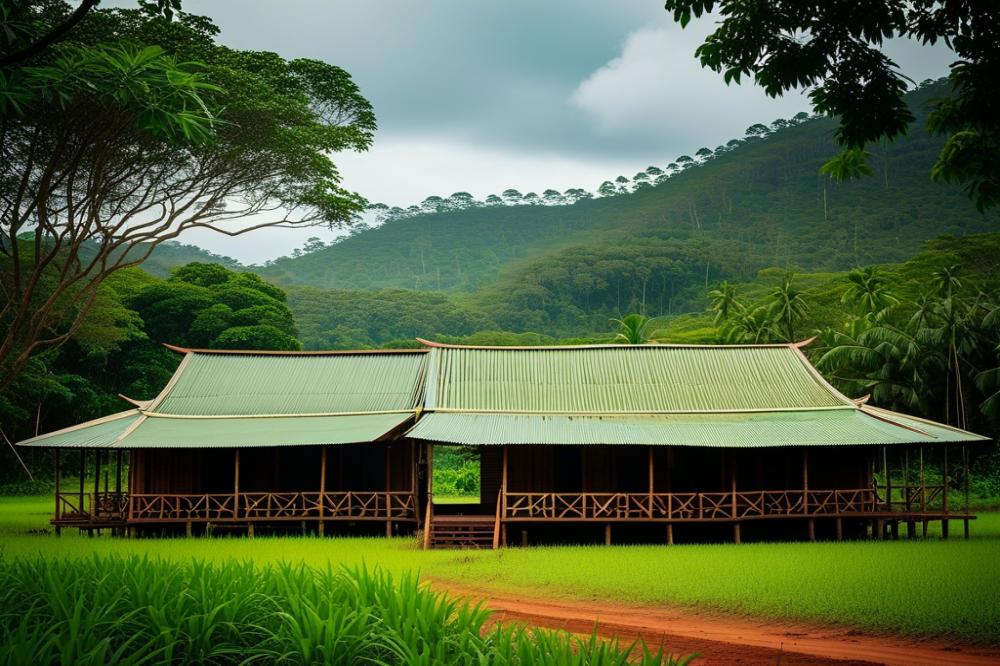
The Bunong people celebrate their rich heritage through music and dance. These art forms are more than entertainment; they play a vital role in their traditions. Songs and movements often reflect the connection to the forests and the spirituality that permeates their daily life.
Traditional instruments are central to their performances. The “tro” is a unique two-stringed instrument that carries the melody. Other instruments include the “chapei,” a long-necked lute, made from bamboo. Many songs accompany gatherings, rituals, and agricultural events. Each note resonates with the culture and offers insight into the community’s values.
Dance is equally significant in Bunong culture. Performers engage in lively dances that narrate stories of their ancestors. Movements mimic natural elements, representing their bond with the earth. During important ceremonies, such as those marking the harvest or spiritual observances, the community comes together to dance and celebrate.
Rituals often involve music as a means of communication with the spirit world. Drumming can evoke a sense of unity, helping participants share collective energy. This connection through sound fosters a deep sense of belonging among the Bunong people.
Participation in these musical traditions strengthens community ties. Families and friends gather to share in the joy of performances. Events often draw in people from neighboring villages. Such gatherings ensure the continuity of traditions, keeping the Bunong identity alive.
Spirituality is a thread woven into every note and step. Each song is a form of storytelling, conveying lessons about life and nature. This narrative quality makes the music even more compelling, offering both wisdom and entertainment.
The gardens and forests provide inspiration for many musical themes. Nature shapes their creative expressions, reflecting their agricultural lifestyle. It’s a reminder of how intertwined their lives are with the environment around them. Silk weaving often features in some songs, showcasing their craftsmanship and creativity.
In listening to the Bunong, one can feel the warmth of their culture. It’s an experience that invites participation, making each person feel included. By engaging with the music and dance, outsiders gain appreciation for their way of life. This cultural exchange enriches everyone involved.
Connection to Nature and Spirituality
The Bunong people, an indigenous ethnic group in Mondulkiri, share a deep bond with the forests surrounding them. Their lives are interwoven with nature in ways that influence their spirituality and daily practices. Every tree, river, and mountain holds a significant place in their beliefs. This connection drives their traditions and rituals, showcasing a culture profoundly linked to the environment.
Respect for nature is central to their way of life. Many rituals honor the spirits believed to inhabit the forests. For instance, before starting agricultural activities, the Bunong often perform ceremonies to seek permission from these spirits. In return, they express gratitude through offerings of food or incense. Such practices reflect a broader belief: the land provides, and in return, the people must care for it.
Community plays a vital role in the Bunong’s connection to their surroundings. Gatherings often occur under large trees, where music and dance bring everyone together. These events strengthen bonds and celebrate their heritage. Silk weaving is another important aspect of their culture, and it often incorporates designs inspired by natural elements. Every piece of woven fabric tells a story of the land and the people’s respect for it.
Practices such as farming are conducted with the utmost care for the ecosystem. The Bunong use traditional methods, ensuring sustainability for generations to come. This approach not only produces food but also protects the environment. Balancing agriculture with conservation is a testament to their understanding of nature’s cycles.
Through their spirituality, the Bunong people remind us of the importance of nature in our lives. Their connection to the forests shapes their identity and underscores their rich cultural fabric. By nurturing a relationship with the land, they teach us a vital lesson: when we respect the earth, we can create a harmonious existence for all living things.
Final Thoughts on the Bunong People
The Bunong people represent an important facet of Cambodia’s diverse culture. Their traditions and customs provide a glimpse into a way of life that has thrived in harmony with nature. Rich in spirituality and a deep connection to the land, this ethnic group offers visitors a unique perspective on what it means to be part of a community. From vibrant festivals to intricate crafts, the Bunong people leave a lasting impression on all who encounter them.
Engaging with their culture can enhance any travel experience. Experiences such as listening to traditional music or participating in local ceremonies can deepen appreciation for the country’s heritage. Each interaction serves as a reminder of the rich tapestry that makes up Cambodia’s identity. Understanding the Bunong culture allows travelers to see beyond typical tourist attractions and discover the soul of the region.
Holidays in Cambodia can be more than just sightseeing. They can be opportunities to connect with genuine human stories and traditions that have shaped lives over generations. Visitors should not miss the chance to explore this remarkable ethnic group. By appreciating their customs, travelers contribute to a greater understanding and respect for the diversity that defines Cambodia.

